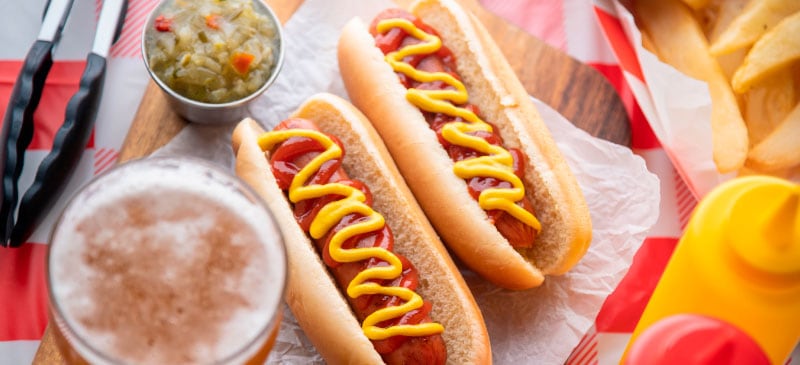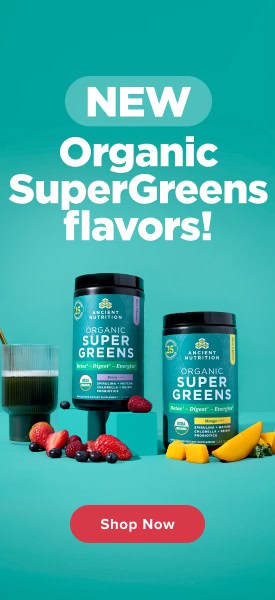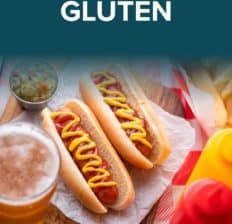This Dr. Axe content is medically reviewed or fact checked to ensure factually accurate information.
With strict editorial sourcing guidelines, we only link to academic research institutions, reputable media sites and, when research is available, medically peer-reviewed studies. Note that the numbers in parentheses (1, 2, etc.) are clickable links to these studies.
The information in our articles is NOT intended to replace a one-on-one relationship with a qualified health care professional and is not intended as medical advice.
This article is based on scientific evidence, written by experts and fact checked by our trained editorial staff. Note that the numbers in parentheses (1, 2, etc.) are clickable links to medically peer-reviewed studies.
Our team includes licensed nutritionists and dietitians, certified health education specialists, as well as certified strength and conditioning specialists, personal trainers and corrective exercise specialists. Our team aims to be not only thorough with its research, but also objective and unbiased.
The information in our articles is NOT intended to replace a one-on-one relationship with a qualified health care professional and is not intended as medical advice.
Surprising Foods with Gluten (Be Wary of the “Gluten-Free” Label!)
June 26, 2023

In a Gallup survey conducted in 2015, 20 percent of Americans said they tried to include gluten-free foods in their diets, and according to Forbes, the number of people following gluten-free diets tripled between 2009 and 2017. However, sometimes it can be difficult to discern foods with gluten from ones without, which can be problematic for those with an intolerance.
Some of these folks know they have celiac disease, which affects about 1 percent of the population worldwide who are severely allergic to gluten, a sticky protein that occurs naturally in wheat, barley and rye. Others suffer from more common gluten intolerance symptoms or “non-celiac gluten sensitivity,” which is roughly around 6 percent to 7 percent of the population.
Meanwhile, many of us — including those who follow a Paleo diet — are simply hoping to avoid foods that contain gluten because of the unwanted starchy carbohydrates, as well as genetically modified and processed grains that can cause inflammatory diseases, weight gain, bloating, cravings and more.
With the growing number of gluten-free options that are becoming available in grocery stores and even some chain restaurants, eating a gluten-free diet may seem more approachable than ever before. Unfortunately, it still can be confusing to determine foods with gluten vs. gluten-free foods due to things like cross-contamination, additives and unsuspected ingredients used to make certain foods.
Gluten Foods
There are several reasons that avoiding gluten can be more difficult than it seems. Besides big food companies making the occasional mistake (that can be life-threatening for some), manufacturing processes can sometimes lead to cross-contamination, in which trace amounts of gluten often wind up in food products that are seemingly gluten-free — like salad dressings, condiments, deli meats and candy.
I’ve found this creates either the paranoid consumer or the blasé one. Some avoid too many foods, such as thinking that rice and potatoes contain gluten and asking if oats are gluten-free. (They are.)
Others are unaware that they’re consuming foods that contain gluten, including many processed foods, beer and even dietary supplements.
Food manufacturers can get into some hot water with the U.S. Food and Drug Administration (FDA) for making mistakes, but keep in mind that the FDA inspects only a tiny fraction of the foods in stores and often relies on consumers to report problems
For a quick refresh, here’s a list of popular foods that contain gluten (and which may surprise you) and then suitable non-gluten replacements:
- Granola: While most granola is supposed to be oat-based, many varieties have wheat gluten mixed in. Be careful, and read that label. You also can make up a bowl of oatmeal with steel-cut oats. Try my pumpkin pie oatmeal or grainless granola.
- Spelt Bread: Because it’s an ancient grain and so healthy (helping our bones and circulation), spelt flour must be gluten-free, right? Wrong! Instead, there are some other ancient grains that make great gluten-free flours, including almond flour, coconut flour and even teff.
- Ezekiel Bread: This bread made from ancient grains suffers the same fate as spelt, as it contains gluten. However, because it’s sprouted, it’s easier to digest than most breads and contains more nutrition, so I recommend it for the non-gluten sensitive if you really must have your bread fix. For those suffering from gluten intolerance or celiac disease, go with some healthy sandwich substitutes like collard wraps.
- Protein Bars: What?! Yes, most protein bars contain gluten to help with the consistency. Instead, make your own, such as this delicious almond butter banana protein bar.
- Couscous: Another innocent-looking ancient grain that is actually made from course grain, couscous is a no-no for gluten avoiders. Instead, go with brown rice or even black rice, which will wow you with its health benefits.
- French Fries: Okay, I’m killing you now, right? Yes, I’m afraid to tell you that most French fries are dusted with flour before they’re frozen. Instead, make your own, or even these tasty turnip fries.
- Ketchup and Mayonnaise: Many condiments, including ketchup and mayonnaise, may use gluten products as a stabilizer, flavoring or thickener. Instead, go with this crazy healthy but delicious coconut oil mayonnaise or homemade ketchup.
- Gravy: Wheat flour is the time-tested thickener that your grandmother still uses, but fortunately there are other options now, such as this gravy recipe that uses gluten-free flour.
- Meatballs: Along with the thickener, gluten is often used to keep meatballs together. Get out your apron, and make these gluten-free baked meatballs instead.
- Sausages and Hot Dogs: While some companies stopped the madness, some sausage casings and fillings still contain flour. Go with brands like Applegate Farms, which sells organic, certified gluten-free hot dogs made from turkey, chicken and beef. You can also try your local farmers market to speak directly with farmers selling the products.
- Beer and Vodka: You knew about beer (hello, barley!) but vodka? Traditionally, vodka is made from gluten-containing grains, but there’s a growing group of specialty vodkas made from alternative materials, such as corn, potatoes and grapes. It’s the same story with beer, where gluten-free is a label that beer drinkers are seeking out. Yes, gluten-free alcohol is becoming a thing.
- Roasted Nuts: OK, I take away your beer and now the bowl of nuts, too? If you’re trying to avoid gluten, then you also need to say no to roasted nuts, as they’re almost always made on shared equipment with gluten-containing products. Instead, bring your own raw nuts along for the ride, or roast them yourselves, such as these salty lime-roasted nuts.
- Ice Cream: I had to go out with a bang with this list. “Ice cream?!” you scream. While it doesn’t make a lot of sense, many ice creams call for flour to help thicken the mixture. Check that label very carefully, or make your own, such as this kefir-based strawberry ice cream.
What’s the best step to take? Stop eating nutritionally bankrupt, packaged convenience foods that contain gluten from big companies.
Keep seeking out real food from real people (if possible, your local farmers) as much as you can, and then cook it up yourself. Your family’s better health will be the happy result.
Foods With Gluten Hiding Inside
The biggest problem is that foods with gluten hide right in plain sight, often going overlooked and even being promoted as healthy food options. In reality, foods that contain gluten may damage the gut and can cause even further problems, particularly for people with gluten intolerance.
Even if you don’t notice any obvious problems, consuming gluten puts your gut at risk for damage. I suggest steering clear of eating too many foods with gluten.
Gluten may be added as a filler and binding agent to many processed foods, including:
- artificial coffee creamer
- bouillon cubes
- candy
- chewing gum
- snack chips
- cold cuts
- fish sticks
- flavored teas
- gravies
- hot dogs
- imitation seafood
- condiments like ketchup and mayonnaise
- rice mixes
- salad dressing
- soy sauce
- tomato sauces
- vegetable cooking sprays
- ground spices
Even if a processed food is labeled ” gluten free,” you might still read some head-scratching descriptions on the ingredient label, such as:
- dextrin, malt or maltodextrin
- gelatinized starch
- hydrolyzed plant protein (HPP)
- hydrolyzed vegetable protein (HVP)
- modified food starch
- monosodium glutamate (MSG)
- natural flavorings
- rice malt or rice syrup
- whey protein concentrate
- whey sodium caseinate
Processed Foods with Gluten to Avoid
The list of foods with hidden gluten is long. The good news is there are ways to avoid them and protect your gut.
Below are some of the biggest offenders when it comes to foods/ingredients that can damage your gut:
Baked wheat flour products
Wheat is the most commonly used grain and the predominant ingredient in everything from breakfast cereal to bagels, pasta, pizza and desserts. While it’s true that people have been baking and cooking with wheat for centuries, today’s wheat does not resemble the wheat of our ancestors.
For the last several decades, modern wheat has been hybridized, crossbred with other grains and species to increase yields, and sprayed with massive amounts of chemical fertilizers and pesticides. There’s other costs to this hybridization process: fewer nutrients; more weight‐producing carbohydrates; and more gluten, phytic acid and amylopectin.
Canola oil and other vegetable oils
These are widely used in salad dressings, and cooking oils are major culprits of gut dysfunction, as they have been shown to eviscerate many of our beneficial microbes. A study published in the American Journal of Clinical Nutrition found that consuming hydrogenated oils greatly increases inflammation throughout the entire body.
Deli meats
They’re loaded with gluten, hydrogenated fats and nitrites, which can lead to digestive troubles for many people. A 2008 study in Nutrition and Cancer demonstrated that people who consume processed meats have a greater risk of cancer, and in 2015, the World Health Organization’s International Agency for Research on Cancer categorized processed meat as equivalent to cigarettes and asbestos in terms of cancer risk.
Microwave popcorn
This food is as safe as you might assume: A statement released by the FDA announced that microwave popcorn contains perfluorooctanoic acid, a synthetic chemical found in nonstick pans that’s been linked to cancer and hormone disruption.
Very few people are aware of how the foods they eat affect their guts or create a constant tug-of-war between harmful bacteria and good bacteria inside their digestive tracts. We need to become more mindful that the foods of the modern world — even many of the ones we’ve long considered to be “healthy” — are making us sick.
Final Thoughts
- Gluten is a protein found in wheat, rye, spelt and barley. This sticky, gooey protein acts like an adhesive to hold foods together and gives dough its elastic qualities, which allows bread to rise during the baking process.
- We lack the specific digestive enzymes to fully break down and absorb gluten. Large blocks of undigested protein find their way into the small intestine, where they slow the absorption of other valuable nutrients.
- Foods with gluten are hiding in plain sight, and consuming too many can lead to a plethora of autoimmune disorders, especially leaky gut syndrome.
- While avoiding foods with gluten may seem like a daunting task, it’s more than doable. However, you must make sure to read all labels and opt for sprouted grains and gluten-free options instead of traditional wheat products.
- Of course, you should avoid processed foods that are loaded with gluten and many other unhealthy, toxic ingredients, and instead opt for healthier, organic, whole foods over foods with gluten hiding below the surface.





